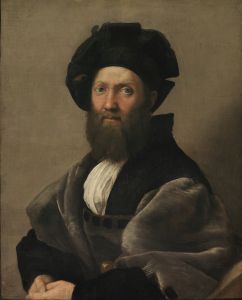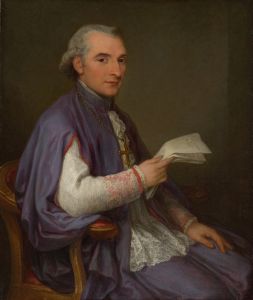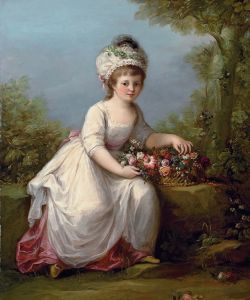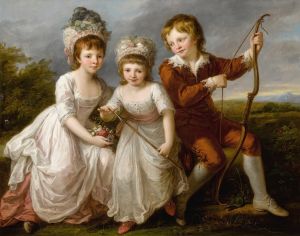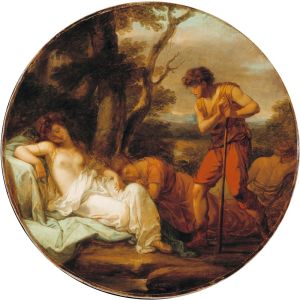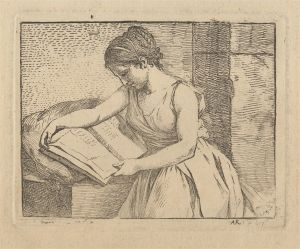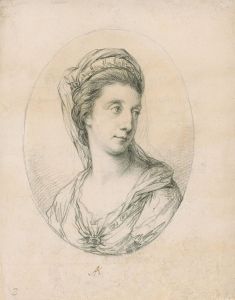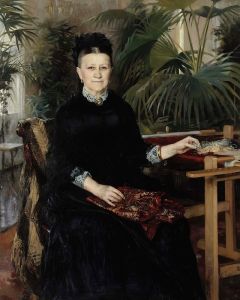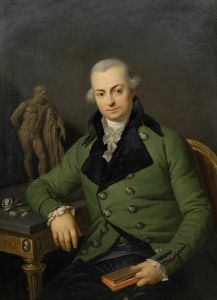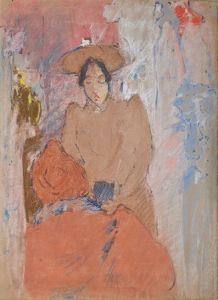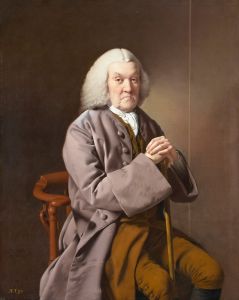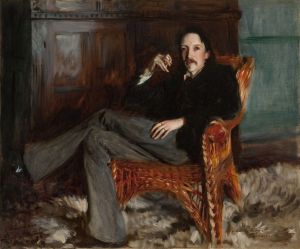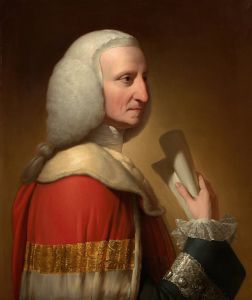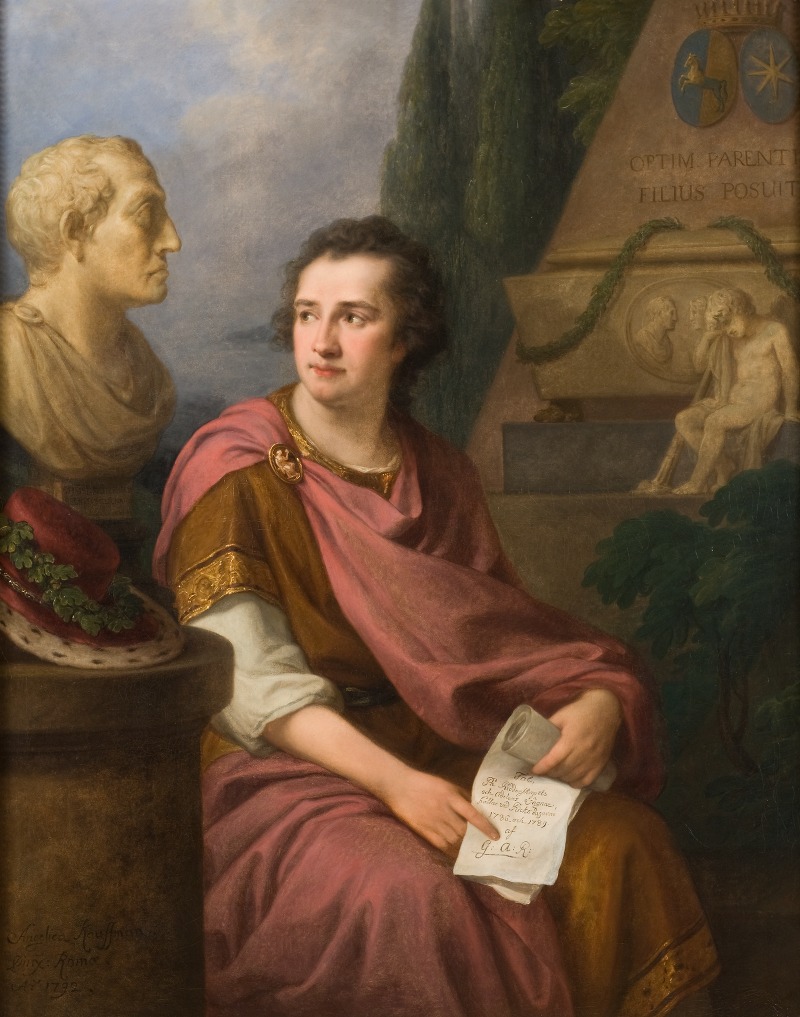
Baron Gustaf Adolf Reuterholm
A hand-painted replica of Angelica Kauffmann’s masterpiece Baron Gustaf Adolf Reuterholm, meticulously crafted by professional artists to capture the true essence of the original. Each piece is created with museum-quality canvas and rare mineral pigments, carefully painted by experienced artists with delicate brushstrokes and rich, layered colors to perfectly recreate the texture of the original artwork. Unlike machine-printed reproductions, this hand-painted version brings the painting to life, infused with the artist’s emotions and skill in every stroke. Whether for personal collection or home decoration, it instantly elevates the artistic atmosphere of any space.
Angelica Kauffmann's portrait of Baron Gustaf Adolf Reuterholm is a notable example of her work as a prominent 18th-century Swiss Neoclassical painter. Kauffmann, born in 1741 in Chur, Switzerland, was a child prodigy in both music and painting. She gained significant recognition in her lifetime, becoming one of the founding members of the Royal Academy of Arts in London in 1768. Her work is characterized by its classical themes, elegant style, and the portrayal of her subjects with a refined sensitivity.
The subject of this particular painting, Baron Gustaf Adolf Reuterholm, was a Swedish nobleman and politician, born in 1756. Reuterholm is best known for his role as a de facto regent of Sweden during the minority of King Gustav IV Adolf. His influence was most prominent during the period known as the "Reuterholm Regime" from 1792 to 1796, following the assassination of King Gustav III. Reuterholm's governance was marked by attempts at reform and modernization, although his tenure was also controversial and ended with his fall from power.
Kauffmann's portrait of Reuterholm captures the baron in a dignified pose, reflecting both his status and character. The painting is executed with Kauffmann's typical attention to detail and her ability to convey the personality of her subjects. Her use of color and light in the portrait is subtle yet effective, highlighting Reuterholm's features and attire, which are indicative of his noble status.
The portrait is a testament to Kauffmann's skill in portraiture, a genre in which she excelled and gained considerable acclaim. Her ability to capture the essence of her subjects made her a sought-after portraitist among the European elite. Kauffmann's work was influenced by her extensive travels across Europe, including stays in Italy, England, and Austria, where she interacted with leading artists and intellectuals of her time.
The painting of Baron Gustaf Adolf Reuterholm is part of Kauffmann's broader oeuvre, which includes historical and mythological subjects, as well as portraits of notable figures of her era. Her work is characterized by its classical influences, drawing inspiration from the art and culture of ancient Greece and Rome. This classical approach is evident in the composition and style of the Reuterholm portrait, which combines elegance with a sense of timelessness.
Kauffmann's legacy as an artist is significant, as she was one of the few successful female painters of her time, breaking barriers in a male-dominated field. Her portraits, including that of Baron Reuterholm, continue to be celebrated for their artistic merit and historical significance. The painting not only serves as a representation of Reuterholm himself but also as a reflection of the cultural and political milieu of late 18th-century Europe.
In summary, Angelica Kauffmann's portrait of Baron Gustaf Adolf Reuterholm exemplifies her mastery in capturing the likeness and character of her subjects. The painting stands as a historical document, offering insight into the life of a notable Swedish figure and the artistic landscape of the period. Kauffmann's contribution to the art world remains influential, and her works are preserved in numerous collections, continuing to be studied and admired for their beauty and craftsmanship.





